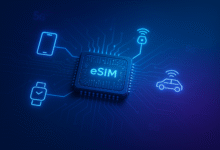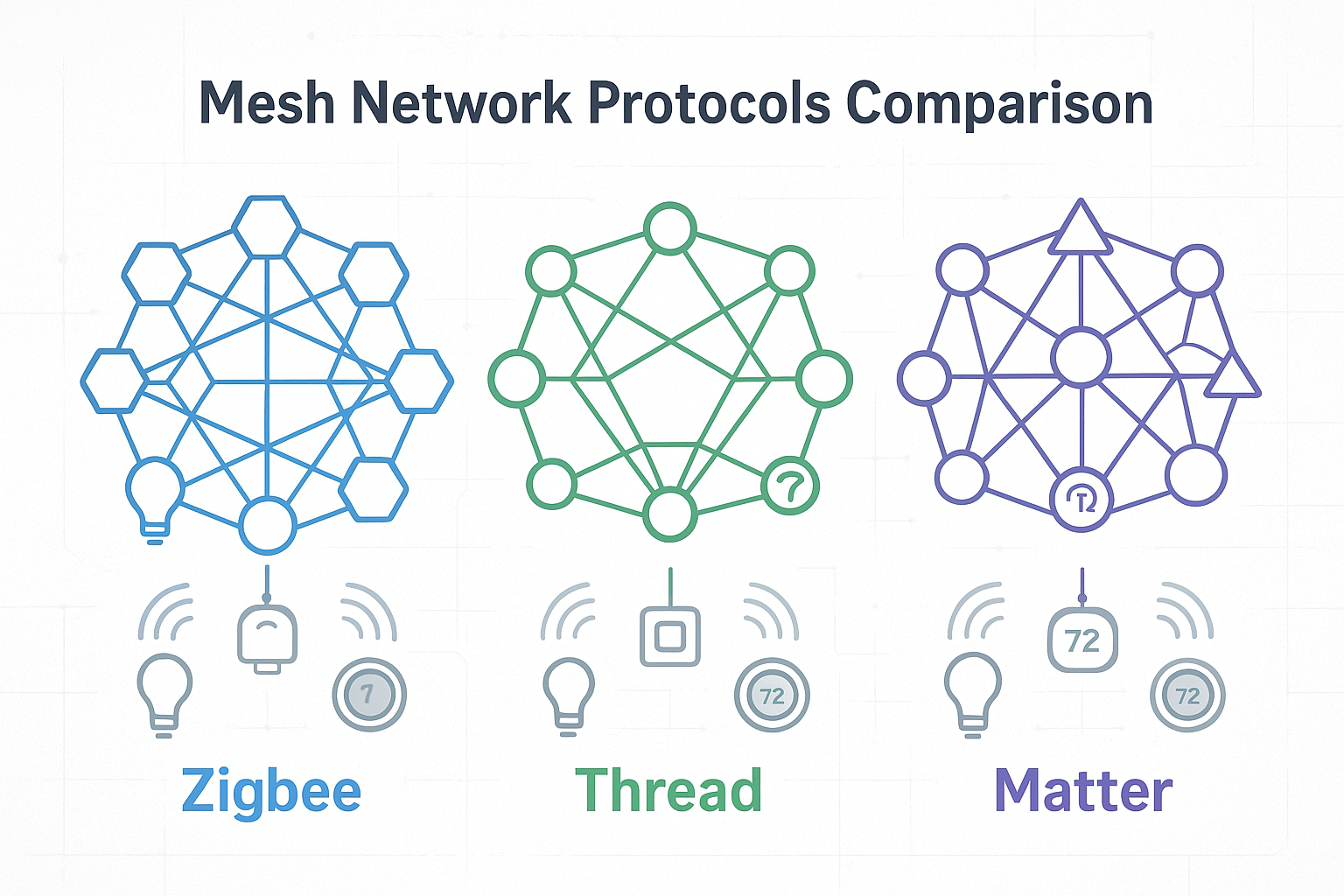
The landscape of artificial intelligence is undergoing a fundamental transformation. While traditional AI models have relied heavily on powerful cloud servers for processing, a revolutionary approach called Edge AI is bringing intelligence directly to the devices we use every day. This paradigm shift represents more than just a technological advancement—it’s reshaping how we think about real-time processing, data privacy, and the very nature of smart devices.
Edge artificial intelligence refers to the deployment of AI algorithms and machine learning models directly on local devices at the network’s periphery, rather than relying on distant cloud servers. From smartphones and smartwatches to autonomous vehicles and industrial sensors, edge devices are becoming increasingly capable of making intelligent decisions independently. This transformation is enabling faster response times, enhanced security, and unprecedented levels of automation across industries.
The convergence of several technological breakthroughs has made this revolution possible: the miniaturization of powerful processors, advances in neural networks, the proliferation of IoT devices, and the development of optimized AI inference techniques. As we explore this transformative technology, we’ll discover how Edge AI is not just changing individual devices, but entire ecosystems of smart cities, healthcare systems, and industrial operations.
What is Edge AI?
Edge AI, also known as AI at the edge, represents a fundamental shift from centralized cloud-based artificial intelligence to distributed intelligence that operates directly on local devices. Unlike traditional cloud computing models where data must be transmitted to remote servers for processing, Edge AI enables machine learning algorithms to run locally on edge devices such as smartphones, IoT sensors, security cameras, and industrial equipment.
The concept builds on edge computing principles, which aim to process data closer to where it’s generated rather than sending it to distant data centers. When combined with artificial intelligence capabilities, this approach creates powerful edge intelligence systems that can analyze information, make decisions, and take actions in real-time without requiring constant internet connectivity.
Key Components of Edge AI Systems
Edge AI systems typically consist of several essential components working together:
- Edge devices equipped with specialized processors or AI accelerators
- Optimized machine learning models designed for resource-constrained environments
- Local data processing capabilities that eliminate the need for cloud transmission
- Real-time analytics engines that can interpret and act on data immediately
- Connectivity options for occasional cloud synchronization and model updates
How Edge AI Differs from Cloud AI
The primary distinction between Edge AI and traditional cloud-based AI lies in where the processing occurs. Cloud AI leverages massive computational resources in data centers to handle complex deep learning tasks, making it ideal for training large models and processing vast datasets. However, this approach introduces significant network latency and requires constant internet connectivity.
Edge AI, conversely, prioritizes speed and autonomy over raw computational power. While edge devices may have limited processing capabilities compared to cloud servers, they excel in scenarios requiring immediate responses, such as autonomous vehicles detecting obstacles or security systems identifying threats.
How Edge AI Works
Understanding the operational mechanics of Edge AI requires examining both the technical infrastructure and the workflow that enables real-time decision making on local devices.
The Edge AI Processing Pipeline
The Edge AI workflow follows a streamlined pipeline designed for efficiency and speed:
- Data Collection: Edge devices continuously gather information through various sensors, cameras, microphones, or other input mechanisms
- Local Processing: Onboard AI models analyze the collected data using optimized machine learning algorithms
- Inference and Decision Making: The system generates predictions, classifications, or decisions based on the processed data
- Immediate Action: Based on the AI inference results, the device takes appropriate actions or triggers responses
- Optional Cloud Sync: When connectivity allows, devices may send summary data or receive model updates from cloud servers
Neural Networks and Deep Learning at the Edge
Edge AI relies heavily on specialized neural networks designed for efficiency rather than maximum accuracy. These networks undergo various optimization techniques:
- Model compression to reduce memory requirements
- Quantization to decrease computational complexity
- Pruning to remove unnecessary network connections
- Knowledge distillation to create smaller, efficient models from larger ones
These optimization techniques enable deep learning models to run effectively on devices with limited computational resources while maintaining acceptable performance levels.
Hardware Requirements and AI Accelerators
Modern edge devices increasingly incorporate specialized hardware designed specifically for AI workloads. These AI accelerators include:
- Neural Processing Units (NPUs) optimized for machine learning computations
- Graphics Processing Units (GPUs) adapted for parallel AI processing
- Tensor Processing Units (TPUs) designed specifically for neural network operations
- Custom Application-Specific Integrated Circuits (ASICs) tailored for specific AI tasks
According to recent IEEE research on Edge AI technology trends, these hardware innovations are crucial for enabling practical Edge AI deployments across various applications.
Benefits of Edge AI
The adoption of Edge AI brings numerous advantages that address many limitations of traditional cloud-based AI systems.
Reduced Latency and Real-Time Processing
One of the most significant benefits of Edge AI is the dramatic reduction in network latency. By processing data locally, edge devices can respond to events in milliseconds rather than the hundreds of milliseconds required for cloud round-trips. This capability is crucial for applications where timing is critical:
- Autonomous vehicles must detect and respond to obstacles instantly
- Industrial robots require real-time coordination for safety
- Medical devices need immediate analysis of patient vital signs
- Smart home systems should respond instantly to voice commands
Enhanced Data Privacy and Security
Edge AI significantly improves data privacy by keeping sensitive information on local devices rather than transmitting it to external servers. This approach offers several security advantages:
- Personal data remains under user control
- Reduced risk of data breaches during transmission
- Compliance with strict privacy regulations like GDPR
- Protection against network-based attacks
Healthcare applications particularly benefit from this privacy enhancement, as patient data can be analyzed locally without exposing sensitive medical information to potential security vulnerabilities.
Also Read: IoT and Edge Computing: Tips for Enhanced Performance
Improved Reliability and Offline Capability
Unlike cloud-dependent systems, Edge AI devices can continue operating even when internet connectivity is limited or unavailable. This reliability is essential for:
- Remote industrial sites with poor connectivity
- Critical infrastructure systems requiring continuous operation
- IoT devices in challenging environments
- Emergency response systems during network outages
Cost Efficiency and Bandwidth Optimization
Edge AI reduces operational costs in several ways:
- Decreased bandwidth usage by processing data locally
- Reduced cloud computing costs for inference operations
- Lower energy consumption for data transmission
- Minimized storage costs for raw data
Organizations can achieve significant savings by implementing Edge AI strategies that reduce their reliance on expensive cloud processing services.
Applications and Use Cases
The versatility of Edge AI has led to its adoption across numerous industries and applications, each leveraging the technology’s unique advantages.
Autonomous Vehicles and Transportation
Autonomous vehicles represent one of the most demanding applications of Edge AI technology. These vehicles must process vast amounts of sensor data from cameras, LiDAR, radar, and other sensors to make split-second decisions about navigation, obstacle avoidance, and safety.
Edge AI systems in vehicles perform multiple critical functions:
- Real-time object detection for pedestrians, vehicles, and obstacles
- Traffic sign recognition and interpretation
- Route optimization based on current conditions
- Predictive maintenance for vehicle components
- Driver assistance and safety monitoring
The ability to process this information locally ensures that safety-critical decisions don’t depend on internet connectivity or cloud server availability.
Smart Cities and Urban Infrastructure
Smart cities leverage Edge AI to optimize urban operations and improve citizen services. The technology enables:
- Traffic management systems that adapt to real-time conditions
- Smart lighting that responds to pedestrian and vehicle presence
- Air quality monitoring with immediate alerts
- Crowd management in public spaces
- Emergency response optimization
Edge devices throughout the city collect and process data locally, providing city managers with real-time insights while preserving citizen privacy.
Industrial Automation and Manufacturing
Manufacturing facilities increasingly rely on Edge AI for predictive maintenance, quality control, and process optimization. Applications include:
- Computer vision systems for quality inspection
- Predictive analytics for equipment failure prevention
- Real-time optimization of production processes
- Safety monitoring and hazard detection
- Supply chain optimization
The comprehensive survey on Edge AI by ScienceDirect highlights how these applications are transforming modern manufacturing environments.
Healthcare and Medical Devices
Healthcare applications of Edge AI focus on improving patient care while maintaining strict privacy standards:
- Wearable devices for continuous health monitoring
- Medical imaging analysis at the point of care
- Drug discovery and treatment optimization
- Emergency response systems
- Personalized treatment recommendations
Edge AI enables healthcare providers to deliver faster, more accurate diagnoses while keeping sensitive patient data secure.
Smart Homes and Consumer Electronics
Consumer applications of Edge AI continue expanding as devices become more sophisticated:
- Voice assistants with improved response times
- Smart security systems with facial recognition
- Energy management and optimization
- Personalized entertainment recommendations
- Home automation based on user behavior patterns
Challenges and Limitations
Despite its numerous advantages, Edge AI faces several significant challenges that organizations must address for successful implementation.
Hardware Constraints and Resource Limitations
Edge devices typically have limited computational power, memory, and energy resources compared to cloud servers. These constraints require:
- Careful optimization of AI models for efficiency
- Trade-offs between model accuracy and performance
- Specialized hardware design for specific applications
- Efficient power management strategies
Model Deployment and Management
Managing AI models across distributed edge devices presents unique challenges:
- Ensuring consistent model versions across devices
- Handling model updates and rollbacks
- Monitoring model performance in diverse environments
- Debugging issues in distributed systems
Standardization and Interoperability
The Edge AI ecosystem lacks comprehensive standards, leading to:
- Compatibility issues between different vendors
- Difficulty in creating unified solutions
- Limited portability of applications across platforms
- Challenges in system integration
Security Considerations
While Edge AI improves data privacy, it introduces new security challenges:
- Protecting AI models from reverse engineering
- Securing distributed device networks
- Managing authentication and access control
- Preventing adversarial attacks on local models
Future Trends and Developments
The Edge AI landscape continues evolving rapidly, with several trends shaping its future development.
Hardware Innovations
Advances in semiconductor technology are making Edge AI more powerful and efficient:
- Specialized AI accelerators with improved performance
- Neuromorphic chips that mimic brain functionality
- Quantum computing applications for edge scenarios
- Integration of AI capabilities into standard processors
5G and Connectivity Improvements
The rollout of 5G networks enhances Edge AI capabilities by:
- Enabling ultra-low latency communication
- Supporting massive IoT device connectivity
- Facilitating edge computing infrastructure
- Improving coordination between distributed systems
Advanced AI Techniques
New machine learning approaches are optimizing Edge AI performance:
- Federated learning for distributed model training
- Transfer learning for rapid deployment
- Continual learning for adaptive systems
- Explainable AI for better decision transparency
Integration with Emerging Technologies
Edge AI is increasingly integrated with other cutting-edge technologies:
- Augmented and virtual reality applications
- Blockchain for secure distributed computing
- Digital twins for real-time simulation
- Robotic process automation
Getting Started with Edge AI
Organizations considering Edge AI implementation should follow a structured approach to ensure successful deployment.
Assessment and Planning
Begin by evaluating your specific use case requirements:
- Identify applications requiring real-time processing
- Assess current infrastructure and device capabilities
- Determine privacy and security requirements
- Establish performance and accuracy benchmarks
Technology Selection
Choose appropriate technologies based on your needs:
- Select suitable edge devices and AI accelerators
- Evaluate machine learning frameworks and tools
- Consider cloud integration requirements
- Plan for scalability and future expansion
Implementation Strategy
Develop a phased implementation approach:
- Start with pilot projects to validate concepts
- Gradually expand to larger deployments
- Implement monitoring and management systems
- Establish maintenance and update procedures
Best Practices
Follow established best practices for Edge AI deployment:
- Optimize AI models for target hardware
- Implement robust security measures
- Plan for offline operation capabilities
- Establish clear governance and compliance procedures
Conclusion
Edge AI represents a fundamental shift in how we deploy and utilize artificial intelligence, bringing smart decision-making capabilities directly to the devices and environments where they’re needed most. By processing data locally and enabling real-time responses, Edge AI addresses critical limitations of cloud-based systems while opening new possibilities for innovation across industries. From autonomous vehicles navigating city streets to smart homes adapting to user preferences, this technology is transforming ordinary devices into intelligent systems capable of understanding and responding to their environment. As hardware continues advancing and AI models become more efficient, Edge AI will play an increasingly central role in creating responsive, secure, and autonomous systems that enhance our daily lives while preserving privacy and reducing dependence on centralized infrastructure.











